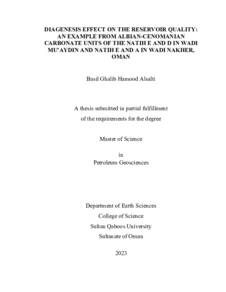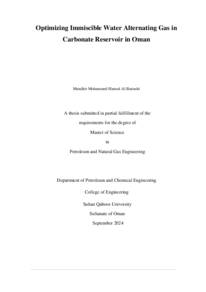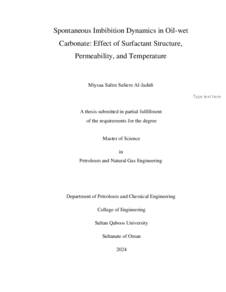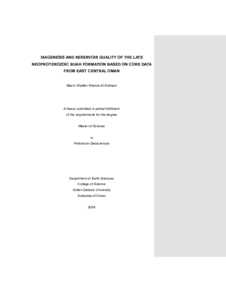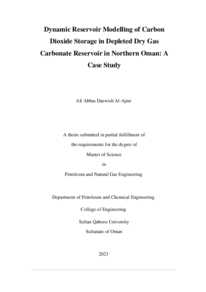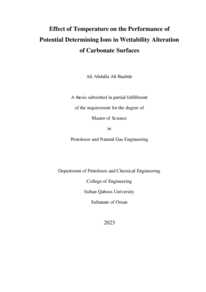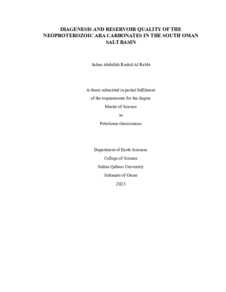Document
Diagenesis effect on the reservoir quality : an example from Albian Cenomanian Carbonate Units of the Natih E and D in Wadi Mu’aydin and Natih E and A in Wadi Nakher, Oman.
Source
Master's thesis
Other titles
تأثیر عملیات التحورات اللاحقة على جودة المكامن النفطیة : مثال من تكوین ناطح (د )، (ھـ) بوادي میعدین و ناطح –(أ)، (ھـ )بوادي النخر الكربوناتي ذو الحقبة الألبیانیة والسینومانیة بسلطنة عمان
Country
Oman
City
Muscat
Publisher
Sultan Qaboos University
Gregorian
2023
Language
English
Subject
Thesis Type
Master's thesis
English abstract
The primary type of reservoirs found in Oman is carbonate reservoirs, which can
be easily altered by various processes, including diagenesis and tectonic events. These
alterations can modify the original chemical composition of the reservoir by adding new
ions, changing the rock fabric, and ultimately affecting the reservoir quality either
positively or negatively. It is crucial to investigate and comprehend post-depositional
alterations and connect them with the initial settings of the reservoir. Therefore, a study is
conducted on the Mid-Cretaceous Natih Formation located in North Oman to comprehend
the effect of diagenesis on the quality of the reservoir in terms of permeability and
porosity. The study focused on two outcrops within Ad Dakhiliyah Government: Natih-E
and D in Wadi Mu’aydin and Natih-E and A in Wadi Nakher at Al Hamara. Thirty-nine
samples were collected from outcrops and sent to the lab for the core cutting process and
to measure the porosity and permeability. Twenty-five samples are thin-sectioned for the
petrographic study. The staining technique provides information about Fe-bearing cement
and dolomite. Major, minor, and trace element analyses measure the concentration of
elements such as Fe, Mn, and Sr.
The common skeletal grains observed are foraminifers, algae, rudist, brachiopod,
and echinoderm fragments. The microfacies comprise mudstone, wackestone, packstone,
and grainstone. A majority of the thin sections are dolomitized. The results indicate that
the reservoir is considered tight. The average porosity is 4%, and the permeability is 0.034
mD. Therefore, the reservoir quality is influenced by the diagenesis process (compaction
or cementation).
Microbial impact plays a vital role in forming full micritization, partial
micritization, and micrite envelop features. Two generations of dissolution resulted in the
formation of secondary porosity, such as vuggy and melodic porosities. Various types of
cement can be determined. These types are isopaches, drusy, blocky, and syntaxial
vi
overgrowth of calcite cement. These cements act as fracture-filled and pore-filled. More
than one generation of fractures is present. These fractures are filled with ferron and nonferron calcite and dolomite in some areas. The cement types have been validated using
elemental analysis.
The study suggests four main diagenetic process alterations influence the Natih
Formation after a detailed analysis of the diagenesis features, including micritization,
dolomitization, cementation, and compaction. Initially, the Natih Formation is affected by
early meteoric and marine diagenesis, followed by shallow burial diagenesis, intermediate
to deep burial diagenesis, and late meteoric diagenesis. Paragenesis sequences for NatihA, D, and E are constructed to reflect the impact of these diagenesis processes
Category
Theses and Dissertations

